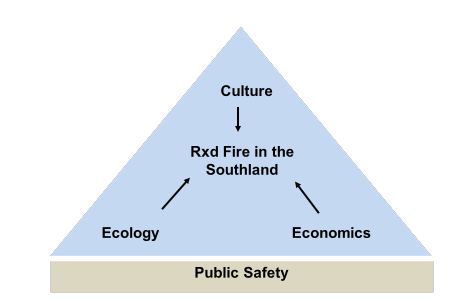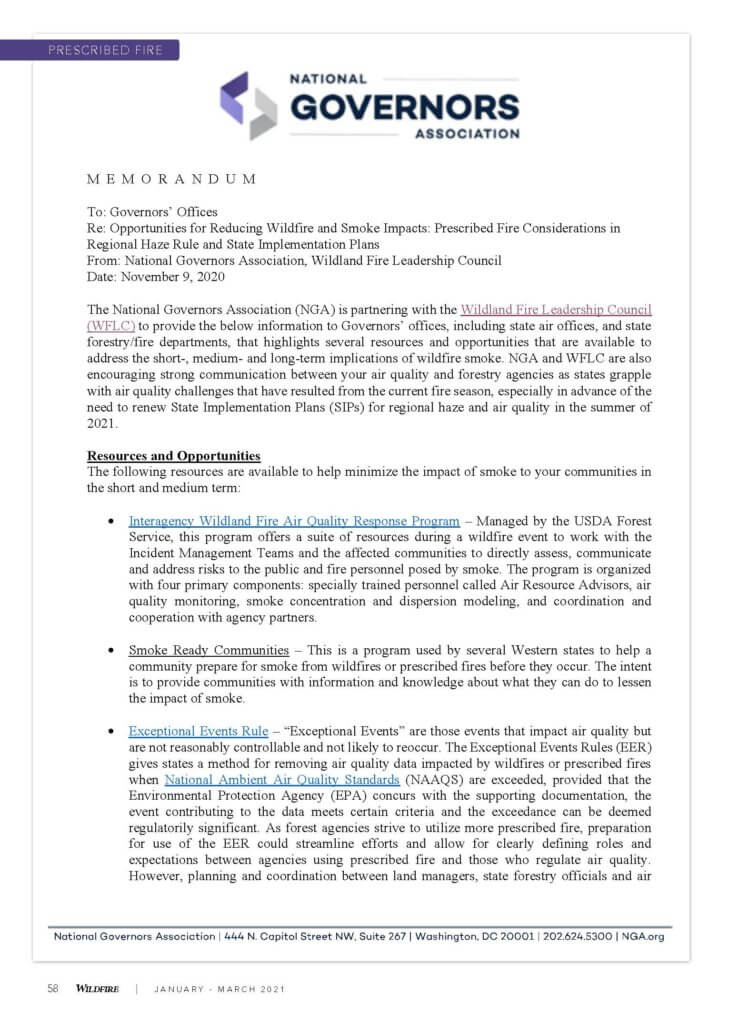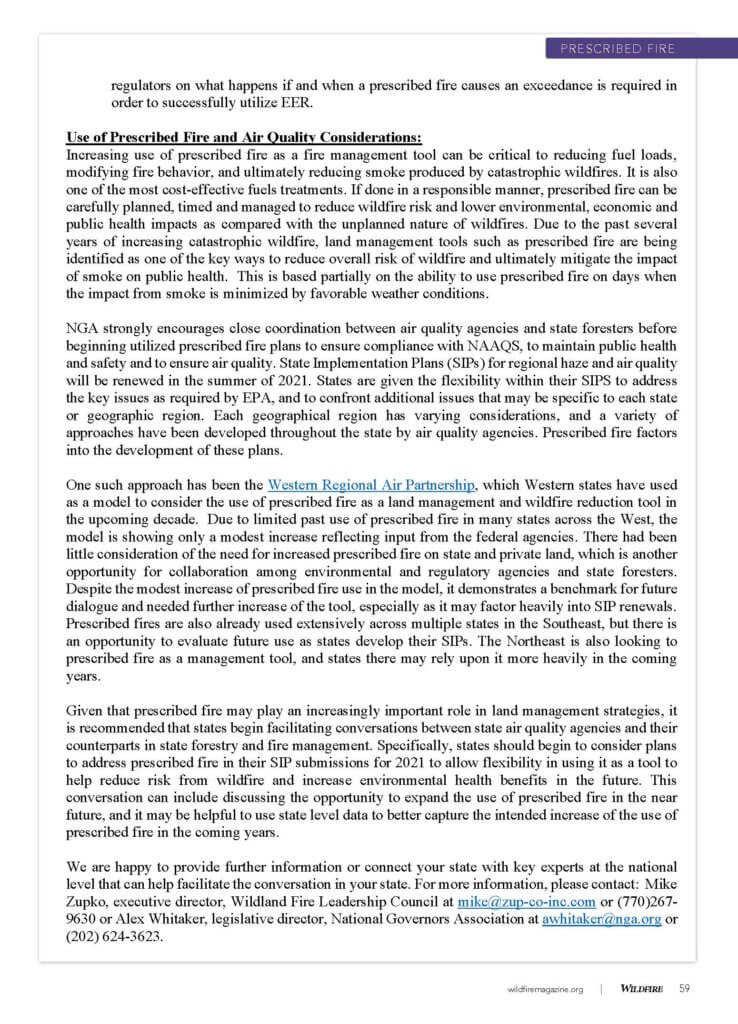Lighting Fire to Fight Fire: US National Governors Association and Wildland Fire Leadership Council Promote Prescribed Buring to Enhance Air Quality
By Johnny Stowe
Increasing use of prescribed fire as a fire management tool can be critical to reducing fuel loads, modifying fire behavior and ultimately reducing smoke produced by catastrophic wildfires. -NATIONAL GOVERNORS ASSOCIATION
In an effort to increase the use of prescribed fire as a land management tool to lessen the impacts of smoke from wildfires, the National Governors Association
(NGA) issued a letter this past November providing guidance and resources to each of the US Governors’ offices. The NGA represents the US’s fifty states and five territories, identifying and prioritizing issues and dealing with governance and policy at the state, local and global levels.
The Wildland Fire Leadership Council (WFLC) comprises all levels of government in the US, from the federal firefighting agency heads down to the local level, and is dedicated to promoting and coordinating consistent wildland fire policies, goals and management activities across the nation. Mike Zupko, Executive Director of the WFLC, said “This letter, which recognizes and encourages the use of prescribed fire through the highest levels of federal and state government, in close partnership with local wildland fire professionals, aims at dealing with the increasingly challenging wildfires and the associated air quality and other issues we are facing, through the judicious use of a time-tested land management tool.”
Prescribed fire (aka “controlled burning”) is by far human’s oldest ecosystem management tool, but about a century ago in the US, this “good-fire culture”–both the practice as well as the people whom it defined–was attacked as part of a nationwide, categorically anti-fire program that is now seen to have been a hegemonic failure. But the wise, multicultural heritage of carefully using fires lit under prescription for ecological, economic and public safety benefits was never quite destroyed (Stowe 2020: Figure 1). In certain areas, most notably the Southeastern US, firelighting traditions persisted. Over the last two decades, the remnant flames of these traditional rural lifeways (TRL) have been fanned and are spreading, being increasingly used, shared and valued (Miller and Stowe 2020). By lighting controlled burns, land managers actively facilitate a natural and inevitable ecological process, becoming a part of, rather than apart from, ecosystem integrity.

It may seem a paradox to some, but in certain areas where it is not a matter of if, but rather of when, wildland fire burns, objective-driven prescribed fires–those safely lit under specific socioecological conditions, when fire intensity and the type, direction and dispersal of smoke can be chosen–are uniquely able to remove fuels that could drive wildfires that would severely impact air quality while also destroying property, harming natural resources and imperiling public safety. Prescribed fire allows controlled burners to “choose the when” of wildland fires.
The burgeoning recognition of prescribed burning in the US is evident in the spate of state prescribed fire councils (37 and growing), and the overarching national Coalition of Prescribed Fire Councils (prescribedfire. net), chaired by prescribed fire master Mark Melvin of the Jones Center at Ichauway, in Georgia.
In September 2020, Secretary of the US Department of Agriculture (USDA) Sonny Perdue (former Governor of Georgia, who grew up in a prescribed fire culture) emphasized the importance of prescribed fire in his keynote address to the annual meeting of the Georgia Prescribed Fire Council youtube.com/watch?v=AdKOoYA5bLg&feature=youtu.be.
Our prescribed fire work is critically important, because it reintroduces the beneficial effects of fire into an ecosystem, producing the kinds of vegetation and landscapes that we want, and reducing the hazard of catastrophic wildfire caused by excessive fuel build-up. – US SECRETARY OF AGRICULTURE Sonny Purdue
The US Forest Service, one of the nation’s leading fire management agencies, is a branch of the USDA. Georgia Governor Brian Kemp also spoke at this meeting youtube.com/watch?v=foSQLS5Jnv0&feature=youtu.be. Georgia, which has a population of 10.6 million, prescribed burns 1.4 million acres per year.
RESOURCES
Miller, S.R and J. Stowe. 2020. Passing the Torch to Tomorrow’s Wildland Fire Professionals: Through Mentoring, Training and Pyrotourism. Wildfire. IAWF. 29:4. 34-39.
Stowe, J. 2020. Fire Ties that Bind: The Natural and Cultural Heritage of Controlled Burning in the Southland. Southern Fire Exchange. youtube.com/watch?v=HvVcIMFgu-s


